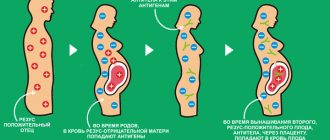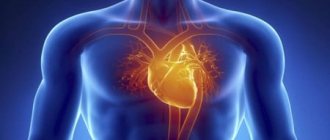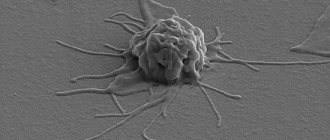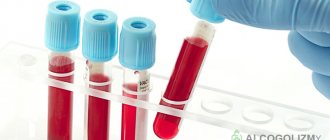Types of temperature
In medical practice, it is customary to distinguish the following types of human body temperature:
- hypothermia;
- normal;
- low-grade fever;
- febrile body temperature;
- pyretic;
- hyperthermia.
Well, now let’s look at each type in more detail and try to figure out what the normal body temperature is for a person.
In what case can we talk about the norm?
Normal human body temperature may depend on:
- age;
- environmental factors;
- time of day;
- general condition of the body.
Many people are wondering if a temperature of 37° C is normal or not. So, a variant of the norm is considered:
- temperature 36.8 ° C - in infants;
- temperature 36.9 ° C - in adults;
- 37.4 ° C - in children from six months to three years;
- 37.0 ° C - in six-year-old children;
- 36.3 ° C - in persons over 65 years of age.
If there is a temperature fluctuation in any direction by 0.5-1.5 ° C, this indicates a disruption in the functioning of the body.
If you want to determine the exact indicators of normal body temperature, you should seek help from a doctor. If this is not possible, then in this case you can do it yourself. It is necessary to measure temperature indicators three times a day for several days and record them. After this, divide the sums of morning, afternoon and evening indicators by the number of measurements. The average will be the normal temperature.
Hypothermia
Observational data indicate that hypothermia is diagnosed in people much less frequently than hyperthermia, but it also poses a danger to human life. The critical body temperature of a person is 27 ° C, and it can cause a coma. However, cases have been recorded when a person’s minimum body temperature was 16 ° C and he survived.
Reduced body temperature should be considered lower than normal by 0.5 ° C - 1.5 ° C. If they decrease by more than 1.5 ° C, then this condition is usually called hypothermia, it requires mandatory medical attention.
The main reason for a decrease in temperature is the flu or a cold. If a person has a weak immune defense and body, then he is not able to fight the infectious process, this is manifested by a decrease in temperature.
Factors that influence the decrease in temperature also include:
- decreased immunity;
- severe hypothermia;
- consequences of the disease;
- dysfunction of the thyroid gland;
- use of certain types of medications;
- low hemoglobin levels;
- hormonal imbalance;
- internal bleeding;
- poisoning;
- overwork;
- radiation sickness;
- hypovitaminosis;
- dysfunction of the adrenal glands;
A decrease in temperature is indicated by loss of strength, dizziness and drowsiness.
There are a considerable number of methods that help eliminate hypothermia, the vast majority of them do not require taking medications. The medicine is used only if this condition is caused by a severe illness.
To normalize temperature indicators, you can:
- put a warm heating pad under the lower limbs;
- wear warm clothes;
- drink hot tea with honey or a decoction of herbs such as ginseng or St. John's wort.
Elevated temperatures
Fever is classified into four types, namely:
- Low-grade body temperature. We can talk about it if the temperature is 37.6 ° C, this is an indication of the presence of an inflammatory process in the body. This is the worst temperature for humans; at such indicators, there is an active fight against pathogenic flora. In this regard, it is not recommended to knock it down; the best option would be to drink a large amount of liquid, which will help reduce the concentration of toxic substances and prevent dehydration.
- Febrile temperature is an increase in readings from 38° C to 39° C, this indicates the body’s fight against infections. A febrile fever is more dangerous for a child than for an adult.
- Pyretic temperature. They talk about it if the mercury column of the thermometer is 39° C. In this case, there is a need to use antipyretic drugs.
At such temperatures, convulsions may occur, so this condition requires special attention. Most often, this temperature is caused by viruses and bacteria that attack the human body, as well as burns and injuries.
- Hyperpyretic. This pathological condition is indicated by readings above 40°C and requires immediate medical attention.
In response to the question at what temperature a person dies from a fever, we can say that the fatal temperature of a person’s body is 42 ° C, because irreversible changes in the brain, depression of the central nervous system and a sharp drop in blood pressure can be observed.
As for the factors that can lead to a rise in temperature to high numbers, only a doctor can diagnose them, but most often this happens due to:
- the presence of viruses and pathogenic microorganisms in the body;
- burns;
- frostbite.
The following symptoms may indicate high temperatures:
- general weakness;
- increased level of fatigue;
- dry skin and lips;
- chills;
- pain in the head;
- aches in muscle fibers;
- pain in the limbs;
- lack of appetite;
- excessive sweat production.
It is imperative to bring down the temperature if it exceeds 38.5°C; the best option would be to consult a doctor. This is explained by the fact that this pathological condition indicates the presence of a disease in the body.
Low-grade fever requires special attention; it is very important to determine the boundary between the normal state and the formation of a pathological process in the body.
Medical workers distinguish hyperthermia and fever, it all depends on the provoking factor for the increase in temperature.
Hyperthermia
Hyperthermia is characterized by overheating of the body as a result of exposure to high environmental temperatures or disruption of the heat exchange process. There is dilation of blood vessels and the release of excessive amounts of sweat.
If the provoking factor of hyperthermia is not eliminated in time and the maximum body temperature is 42 ° C, heat stroke occurs. This pathological condition (especially if a person has a history of diseases of the cardiovascular system) leads to death.
Fever
Fever is characterized by an increase in temperature as a result of the body's protective reaction to the influence of pathogenic factors. The formation of this pathological condition can lead to:
- infectious processes of viral origin;
- inflammatory processes;
- soft tissue and joint injuries;
- diseases of the cardiovascular system;
- disruption of the functioning of the endocrine system;
- decrease in the body's defenses;
- allergic reactions.
In childhood, fever can occur during teething.
At what degrees does blood clot?
Blood clotting
- this is the most important stage of the hemostatic system, responsible for stopping bleeding when the vascular system of the body is damaged.
The combination of various blood clotting factors interacting with each other in a very complex way forms the blood coagulation system
.
Blood coagulation is preceded by the stage of primary vascular-platelet hemostasis. This primary hemostasis is almost entirely due to vasoconstriction and mechanical occlusion of platelet aggregates at the site of damage to the vascular wall.
The characteristic time for primary hemostasis in a healthy person is 1-3 minutes.
Blood coagulation itself (hemocoagulation, coagulation, plasma hemostasis, secondary hemostasis) is the complex biological process of formation of fibrin protein filaments in the blood, which polymerize and form blood clots, as a result of which the blood loses its fluidity, acquiring a cheesy consistency. Blood clotting in a healthy person occurs locally, at the site of formation of the primary platelet plug. The typical time for the formation of a fibrin clot is about 10 minutes. Blood clotting is an enzymatic process.
The founder of the modern physiological theory of blood coagulation is Alexander Schmidt.
In scientific research of the 21st century, conducted on the basis of the Hematological Research Center under the leadership of Ataullakhanov F.I.
, it was convincingly shown [1] [2] that blood coagulation is a typical autowave process in which the effects of bifurcation memory play a significant role.
Physiology [edit | edit code ]
The process of hemostasis comes down to the formation of a platelet-fibrin clot. It is conventionally divided into three stages [3]:
- temporary (primary) vasospasm;
- formation of a platelet plug due to adhesion and aggregation of platelets;
- retraction (contraction and compaction) of the platelet plug.
Vascular damage is accompanied by immediate activation of platelets. Adhesion (sticking) of platelets to connective tissue fibers at the edges of the wound is caused by the glycoprotein von Willebrand factor [4].
Simultaneously with adhesion, platelet aggregation occurs: activated platelets attach to damaged tissues and to each other, forming aggregates that block the path to blood loss.
A platelet plug appears [3].
From platelets that have undergone adhesion and aggregation, various biologically active substances (ADP, adrenaline, norepinephrine and others) are intensely secreted, which lead to secondary, irreversible aggregation.
Simultaneously with the release of platelet factors, thrombin is formed [3], which acts on fibrinogen to form a fibrin network, in which individual red and white blood cells get stuck - a so-called platelet-fibrin clot (platelet plug) is formed.
Thanks to the contractile protein thrombostenine, platelets are pulled towards each other, the platelet plug contracts and thickens, and its retraction occurs [3].
Rules for measuring temperature
In order for the temperature readings to be correct when making measurements, you must adhere to the following recommendations:
- Make sure your armpit is dry.
- On the eve of measurement, wipe the thermometer with a dry cloth and beat to 35°C.
- When placing the thermometer under your arm, make sure that its tip fits snugly against your body.
- Hold the thermometer under your arm for at least 10 minutes.
Please note that it is considered normal for an adult to have different temperatures under different armpits.
When measuring in the mouth you need:
- Be at rest for at least five minutes before taking the measurement.
- Remove dentures, if any, from the mouth.
- Wipe the thermometer with a napkin and place it in the oral cavity under the tongue.
- Wait four minutes.
To summarize, it is necessary to focus on the fact that the normal body temperature may be different for each person. Therefore, if you have even the slightest suspicion of any violations, you should consult a doctor.
Now you know what temperature people should have normally. We hope the information was useful to you and provided answers to your questions.
The first symptom of many diseases is often an increase in body temperature. A person feels pain in the head, aches in muscles and joints, weakness throughout the body. The only desire that arises with such symptoms is to crawl under a warm blanket (because the body is shaking from chills) and fall asleep. All of us, without exception, both small children and very old people, are familiar with this condition.
Is it possible to ignore fluctuations in body temperature? Should I be concerned when it increases and resort to antipyretic medications? Does high temperature threaten the health and life of the patient? Let's take a deeper look at these questions.
Blood properties and composition
The suspension properties of blood depend on the protein composition of plasma (with a normal ratio of albumin than globulin).
The colloidal properties of blood are associated with the presence of proteins in plasma. Since protein molecules can hold water, the properties ensure the consistency of the fluid composition of the blood.
Electrolyte properties, determined by the osmotic pressure of the blood, depend on the content of anions and cations.
The blood plasma of a healthy person contains about 8% proteins, of which the share of serum albumin is 4%, serum globulin - 2.8%, fibrinogen - 0.4%. The percentage of mineral salts in plasma is approximately 0.9-0.95%; a glucose test taken on an empty stomach normally shows 3.6-5.55 mmol/liter.
What temperature is dangerous for a person is the one at which the blood protein coagulates, but the ratio of blood cells and their number are also the most important indicators of human health. As for hemoglobin content, in men its normal proportion is up to 8.1 mmol/liter, and in women - up to 7.4 mmol/liter. The number of red blood cells in 1 mm³ of blood: in men - 4.5-5 million cells, in women from 4 to 4.5 million. The number of platelets in 1 cubic millimeter is 180-320 thousand cells, leukocytes - 6-9 thousand.
High temperature is a protective reaction of the body
A jump in body temperature, as a rule, is the body’s reaction to waste products of pathogenic microorganisms developing in various organs. Toxins entering the blood act on blood vessels like a red rag on a bull. As a result, an increase in temperature is observed. What happens during this body reaction to viruses and bacteria?
First. Elevated body temperature creates unfavorable conditions for the development and life of many pathogenic microorganisms. Therefore, when the thermometer shows 38°C and above, the body intensively fights the disease, destroying viruses and bacteria.
Second. At high temperatures, the process of production of substances that kill pathogens (for example, interferon) is accelerated.
Third. A person with elevated body temperature loses his appetite, he feels weakened muscles, which is not at all conducive to intense exercise. As a result, the body directs all its forces to fight the infection.
Blood functions
The most important fluid of our body serves as a vehicle for it, carrying important substances; thanks to blood, the correct balance is maintained within us, called homeostasis. Blood also plays a major role in protecting the body from foreign substances.
In a closed system of blood vessels, blood performs a variety of functions.
- Transport, divided into: respiratory (oxygen is transferred from the lungs to all tissues, and carbon dioxide is transferred from tissues to the lungs), nutritional (substances are delivered by blood to tissue cells), excretory (blood removes excess metabolic products), thermoregulatory (regulates body temperature ), regulatory (transfer of hormones (signal substances formed in organs), blood is a connector between various systems and individual organs.
- Blood protects our body from foreign bodies.
- The function of maintaining a constant internal environment of the body - the balance of acids and alkalis, electrolytes and water.
- Mechanical, providing a rush of blood to the organs. It is clear that once the boiling point of blood is reached, all its functions are also reduced to zero.
When is elevated temperature dangerous?
At first glance, it seems that an increase in body temperature is very beneficial for the body in the fight against microbes. But in reality, not everything is so rosy. Temperatures equal to or exceeding 39°C are dangerous for the functioning of the heart muscle. If this temperature lasts for more than an hour, then the heart, and other organs, feel an unbearable load (as in force majeure). Among other things, such a change in body temperature has a detrimental effect on a person’s brain activity. When there is a high fever, a person may become delirious.
What else is happening to the body at this time? The functionality of organs throughout the body is highly dependent on the state of protein compounds. So, under the influence of high temperatures, the protein simply coagulates (as happens when boiling ordinary eggs). We cannot say that in our body this happens in a few minutes, like in a boiling pan, but we should not exclude the possibility of denaturation during prolonged heat at a temperature of more than 40°C.
In addition, at high temperatures (above 39°C), convulsions may occur. It can also provoke exacerbations of various chronic diseases.
It is for these reasons that the safest (and even useful, in the sense that the body most effectively fights infection) is considered to be an increase in body temperature within the following range: in adults – up to 38.5°C, in children – up to 38°C. Such a relatively small hyperthermia will allow you to quickly cope with the disease. If the indicators remain above these levels, it is worth bringing down the temperature with an effective antipyretic agent. Some folk remedies also help in reducing the temperature, for example, raspberry tea, linden decoction,
Body temperature
- a complex indicator of the thermal state of the human body, reflecting the complex relationship between heat production (heat generation) of various organs and tissues and heat exchange between them and the external environment. The average human body temperature typically ranges between 36.5 and 37.2 degrees Celsius, due to internal exothermic reactions and the presence of "safety valves" that allow excess heat to be removed through sweating.
The “thermostat” (hypothalamus) is located in the brain and is constantly engaged in thermoregulation. During the day, a person’s body temperature fluctuates, which is a reflection of circadian rhythms (more about which you can read in the previous issue of the newsletter - “Biological Archives” on the newsletter website): the difference between body temperature early in the morning and in the evening reaches 0.5 - 1. 0°C. Temperature differences between internal organs (several tenths of a degree) were detected; the difference between the temperature of internal organs, muscles and skin can be up to 5 - 10°C.
In women, the temperature varies depending on the phase of the menstrual cycle; if a woman’s body temperature is usually 37°C, it drops to 36.8°C in the first days of the cycle, before ovulation it drops to 36.6°C, then, on the eve of the next menstruation, it rises to 37.2°C, and then again reaches 37°C. In addition, it has been found that in men the temperature in the testicular area is 1.5 ° C lower than on the rest of the body surface and the temperature of some parts of the body differs depending on physical activity and their position.
For example, a thermometer placed in the mouth will show a temperature 0.5°C lower than that of the stomach, kidneys and other organs. Temperature of various areas of the body of a conventional person at an ambient temperature of 20°C internal organs - 37°C armpit - 36°C deep muscular part of the thigh - 35°C deep layers of the calf muscle - 33°C elbow area - 32°C hand - 28°C center of the foot - 27-28°C The critical body temperature is considered to be 42°C, at which metabolic disorders occur in the brain tissue. The human body is better adapted to cold. For example, a drop in body temperature to 32°C causes chills, but does not pose a very serious danger.
At 27°C, coma occurs, cardiac activity and breathing are impaired. Temperatures below 25°C are critical, but some people manage to survive hypothermia. Thus, one man, covered with a seven-meter snowdrift and dug out five hours later, was in a state of imminent death, and his rectal temperature was 19°C. He managed to save his life. There are two other cases where patients who were hypothermic to 16°C survived.
Fever
Hyperthermia is an abnormal increase in body temperature above 37°C as a result of illness. This is a very common symptom that can occur when there is a problem in any part or system of the body. An elevated temperature that does not subside for a long time indicates a dangerous condition of a person. Elevated temperature can be: low (37.2-38°C), medium (38-40°C) and high (over 40°C). Body temperature above 42.2°C leads to loss of consciousness. If it does not subside, brain damage occurs.
Hyperthermia is divided into intermittent, temporary, permanent and recurrent. Intermittent hyperthermia (fever) is considered the most common type, characterized by daily temperature changes above normal. Temporary hyperthermia means a daytime decrease in temperature to normal levels, and then a new increase above normal. Temporary hyperthermia over a wide temperature range usually causes chills and increased sweating. It is also called septic fever.
Constant hyperthermia is a constant increase in temperature with small differences (fluctuations). Recurrent hyperthermia means alternating febrile and apyretic (characterized by the absence of elevated temperature) periods. Another classification takes into account the duration of hyperthermia: short (less than three weeks) or prolonged. Prolonged hyperthermia can occur when the temperature rises for unknown reasons, when careful examination cannot explain the causes. Infants and young children experience high temperatures for longer periods of time, with greater fluctuations and faster increases in temperature than older children and adults.
Possible causes of hyperthermia
If your temperature rises above normal, be sure to consult a doctor to determine the possible cause of hyperthermia. A temperature rise above 41°C is a reason for immediate hospitalization.
Immune complex disorder
With such disorders (dysfunctions), low hyperthermia is usually observed, although moderate changes in erythema may occur. Hyperthermia can be intermittent and temporary, as in acquired immune deficiency syndrome (AIDS) or systemic lupus erythematosus, or it can be permanent, as in polyarthritis. Along with standard complaints (fatigue, weight loss), hyperthermia can cause increased sweating at night.
Infectious and inflammatory diseases
Hyperthermia can be low (as in Crohn's disease or ulcerative colitis) or high (as in bacteriological pneumonia); intermittent (as in infectious mononucleosis, otitis media); septic (as with lung abscess, influenza, endocarditis); constant (as with meningitis); recurrent (as with malaria). The rise in temperature may occur suddenly, as in toxic shock syndrome, or the rise in temperature may occur gradually, as in microplasma pneumonia. With hepatitis, hyperthermia can only be a harbinger of the disease, and with appendicitis, on the contrary, it means an acute stage of the disease. If the temperature rises suddenly with tachycardia (increased heart rate), shortness of breath, and confusion, this may indicate life-threatening septic shock, which occurs with peritonitis and gram-negative bacteremia.
Tumors
With primary tumors and metastases, long periods of elevated temperature of varying properties may occur. For example, in acute leukemia, slowly occurring low hyperthermia, pallor, and bleeding may be observed. With the same disease, hyperthermia can appear suddenly, be high and be accompanied by bleeding. Sometimes Hodgkin's lymphoma causes Pehl-Ebstein fever and recurrent hyperthermia.
Thermoregulation disorder
A sudden and sharp increase in temperature to 41.7 ° C is usually observed in life-threatening diseases such as stroke, thyrotoxic crisis, malignant hyperthermia, as well as damage to the central nervous system. Low and moderate hyperthermia is accompanied by increased sweating.
Medications
Hyperthermia and rash usually occur due to increased sensitivity to antifungal drugs, sulfonamides, penicillin antibiotics, etc. Hyperthermia can be observed during chemotherapy. It can be caused by medications that cause sweating. Hyperthermia can also occur with toxic doses of certain drugs.
Procedures
Intermittent or temporary hyperthermia may occur after surgery. Blood transfusions also usually cause sudden fever and chills. Diagnosis Sudden or gradual onset of hyperthermia sometimes accompanies radiological studies in which contrast media are used.
Body temperature I
Body temperature
Normal human activity is possible within a range of only a few degrees. A decrease in body temperature significantly below 36° and an increase above 40-41° is dangerous and can have serious consequences for the body. If heat transfer is completely stopped by any means, it will die in 4-5 hours
from overheating.
The necessary balance between heat production and heat release is maintained by the central nervous system. Information about body temperature comes to it from peripheral and central thermoreceptors, some of which perceive an increase in temperature, others - a decrease in temperature. External (peripheral) are located in the skin and respond to changes in its temperature, mainly associated with changes in ambient temperature. Central receptors are located in various areas of the brain and spinal cord and respond to changes in the temperature of the internal environment, in particular the blood that washes it.
There is a distinction between the temperature of the internal environment of the body and the temperature of the skin. The temperature of the internal organs is different, depends on the intensity of the biochemical processes occurring in them and is much higher than the temperature of the skin - in the rectum it is 0.3-0.4 ° higher than in the armpit. It has the highest temperature (about 39°). The temperature of human skin is not the same in different parts of it: higher in the armpit, somewhat lower on the skin of the neck, face, torso, even lower on the skin of the hands and feet, and the lowest on the skin of the toes.
In humans, T., when measured in the armpit, ranges from 36-37.1°. T. t. depends on the ambient temperature, its humidity, speed, intensity of muscle work, clothing, cleanliness and moisture of the skin, etc. Physiological fluctuations in T. t. during the day are known: the difference between morning and evening T. t. is on average 0.3-0.5°, with the morning one lower than the evening one; in elderly and senile people, T. t. may be slightly lower than in middle-aged people. In early childhood, there is a special instability of T. t. with large fluctuations in different conditions (see Infant (Infant)). Most inflammatory and infectious diseases are accompanied by an increase in T. t.; in some infectious diseases, a certain pattern of changes is noted, which has diagnostic significance. T. T. can decrease in case of poisoning with various poisons, in coma, and in some debilitating diseases.
To measure T. t., a medical one is usually used. A mercury thermometer is a glass case with a small reservoir filled with mercury and a glass tube - a capillary attached to a scale inside the case. The thermometer scale allows you to determine body temperature from 35 to 42° with an accuracy of 0.1°. When measuring it, it heats up in the tank and is forced out to a mark corresponding to the body temperature at the time of measurement. A pin is soldered between the capillary and the reservoir to prevent the reverse movement of mercury, and the thermometer records the maximum temperature to which the mercury has risen.
To measure body temperature, the lower part of a thermometer with a mercury reservoir is placed in the armpit, which has been previously wiped dry. Sometimes the thermometer is placed in the inguinal fold, in the rectum, in these cases the rules of use are explained by a nurse. It is necessary to ensure the correct position of the thermometer, especially in children, the elderly and restless patients, holding it, because If positioned incorrectly, the thermometer may show a lower temperature.
Temperature is measured within 7-10 minutes
, usually twice a day, in the morning between 7 and 9 o’clock and in the evening between 17 and 19 o’clock, and in some cases, as directed by a doctor, more often. noted on the temperature sheet (at home they write it down on a regular piece of paper), because It is important to establish fluctuations in body temperature.
After measuring the temperature, the thermometer is shaken vigorously several times, and the mercury drops, usually below the measurement scale. Shake carefully so as not to break the thermometer. If this happens, the mercury should be collected and removed from the room, because Mercury vapor is harmful.
At home, the thermometer is stored in a case.
Before use, wipe it with a cotton swab moistened with alcohol or cologne, and if necessary, wash it with warm (but not hot) water and soap. II Body temperature
is a value characterizing the thermal state of the body; measured mainly in the axilla.
Body temperature is hyperpyretic
(Greek hyper- over, above + pyretos heat) - T. t. above 41°.
Body temperature is pyretic
(Greek pyretos heat) - T. t. within 39-41 °.
Body temperature is febrile
— T. t. within 38-39°.
1. Small medical encyclopedia. — M.: Medical encyclopedia. 1991-96 2. First aid. - M.: Great Russian Encyclopedia. 1994 3. Encyclopedic Dictionary of Medical Terms. - M.: Soviet Encyclopedia. — 1982-1984
Blood plasma
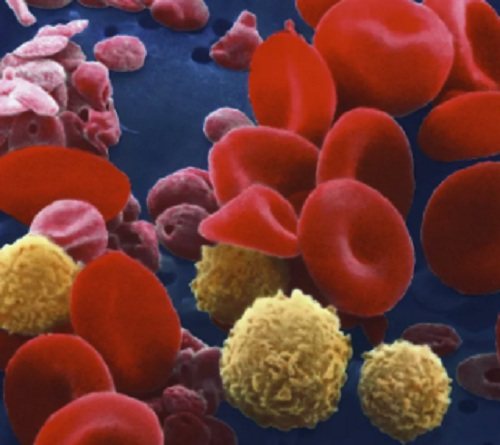
From the point of view of body tissues, plasma is the most important intercellular substance of liquid connective tissue, that is, blood.
Plasma contains a solution of electrolytes, signaling substances, metabolites, nutrients, proteins, trace elements, and vitamins. The electrolyte composition of the plasma resembles seawater, which may be evidence of the evolution of life forms from the sea.
Plasma translated from Greek means “something formed, formed.” The liquid part of the blood contains water and suspensions - proteins (albumin, globulins and fibrinogen) and other compounds. Plasma is almost 90% water, 2-3% inorganic and about 9% organic. The composition of blood plasma includes carbon dioxide and oxygen, enzymes, hormones, mediators and vitamins, that is, biologically active substances.
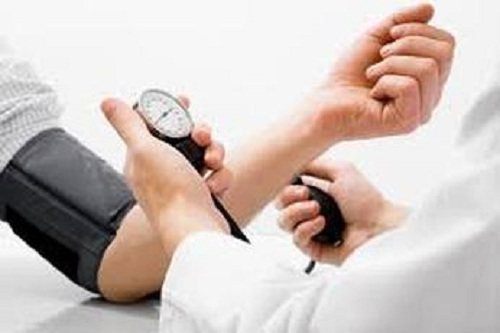
Blood clotting in newborns
During the first week, the blood clotting of a newborn occurs very slowly, but during the second week, the indicators of coagulation factors and prothrombin levels are observed to approach the normal level of an adult.
Already two weeks after birth, the fibrinogen content increases significantly and reaches the levels of an adult.
The content of other coagulation factors approaches the levels normal for an adult by the end of the first year of life.
They reach normal standards by the age of 12 years.




